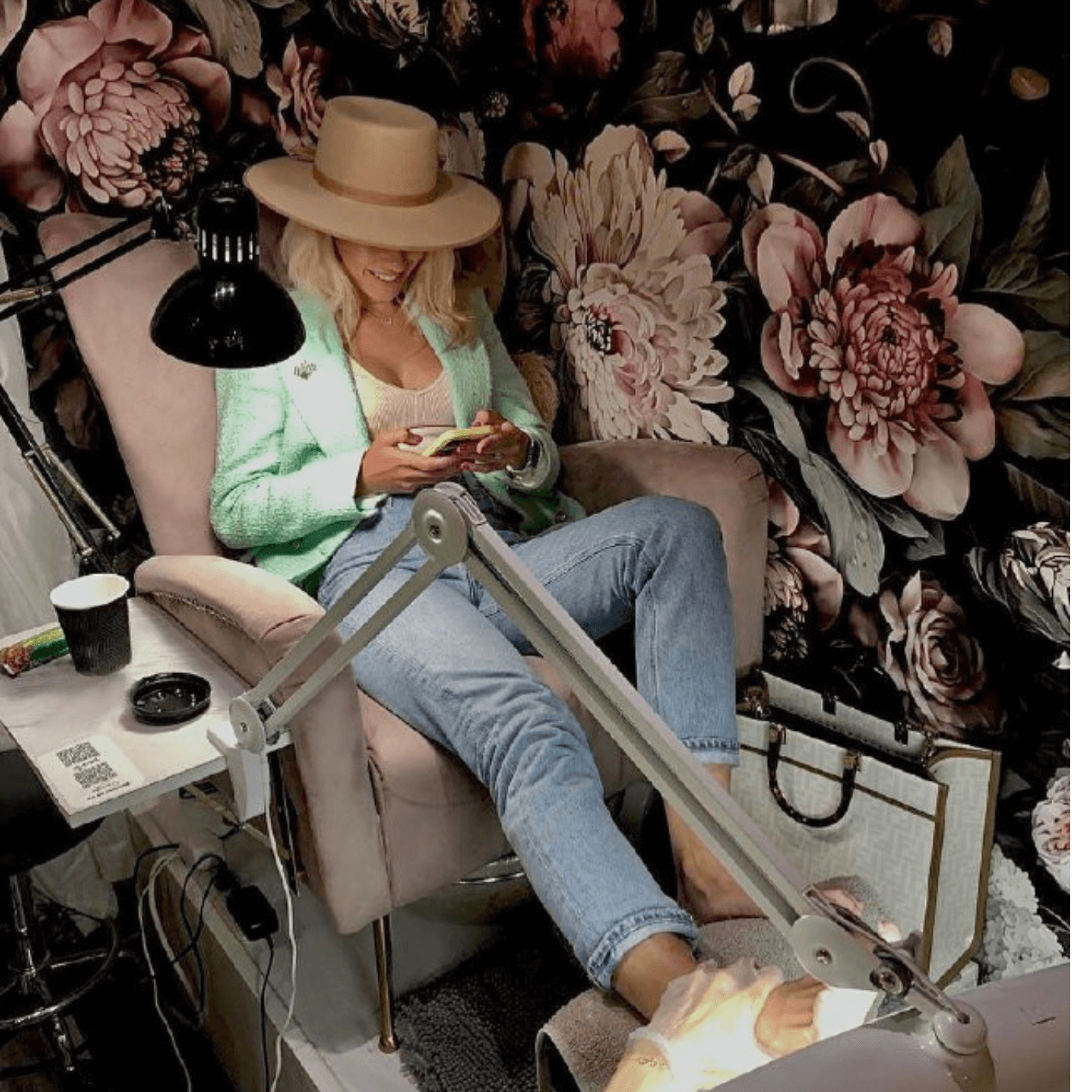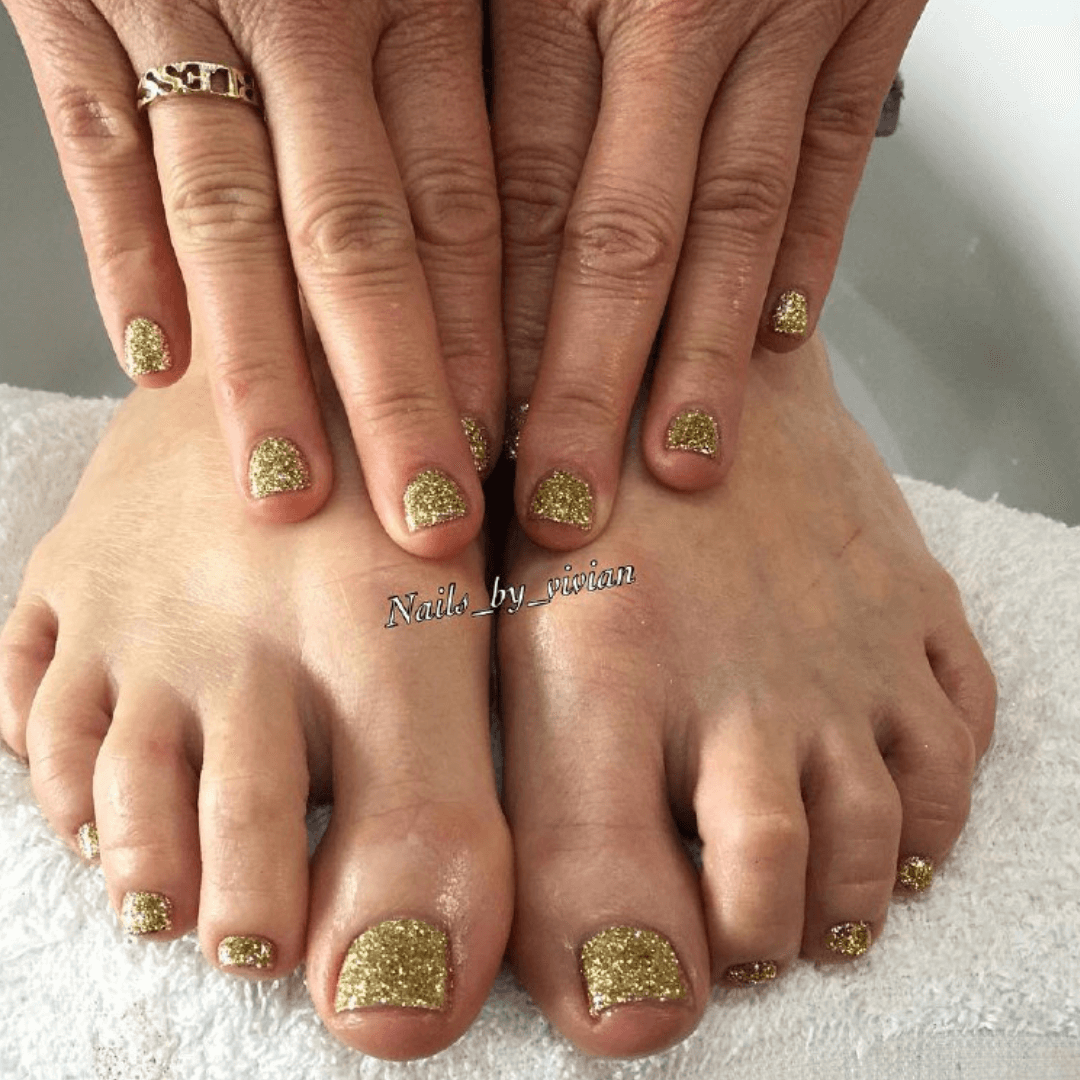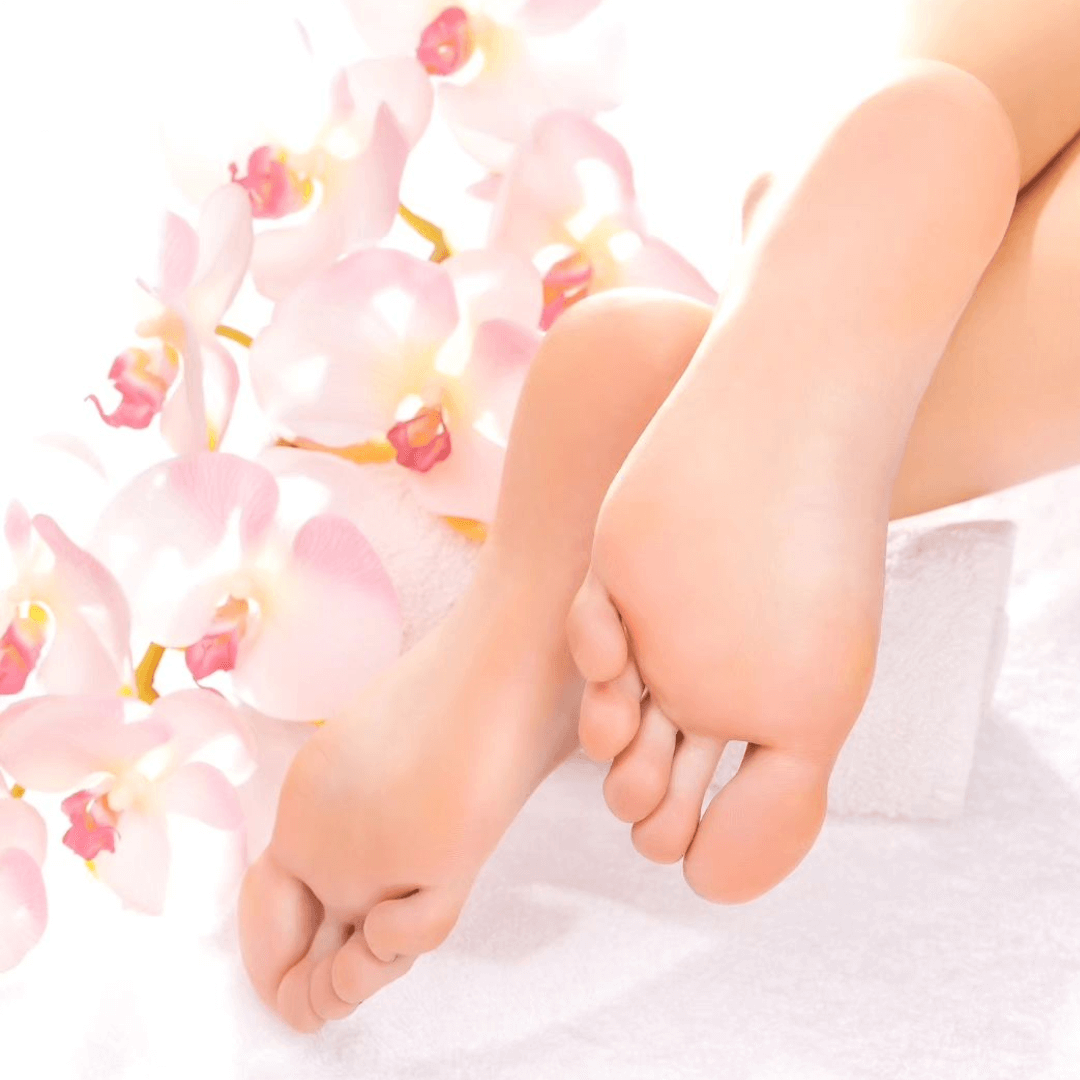Types of Pedicures - Your Complete Guide for 2026
Posted on Nov 17, 2023
There are many types of pedicures to choose from prophylactic medical pedicure, French pedicure, spa, paraffin, fish pedicure, gel pedicure, and more. I have has put together a complete guide to help you understand what each type of pedicure offers.
Jump to the Section You Like
What Is A Pedicure?
A pedicure is a treatment that removes dead skin cells on your feet, then trims and shapes the nails. You can get a pedicure at almost any nail salon or spa, but at home pedicures are also common.
First, the nail tech will use polish remover to clean your toenails if necessary, then they’ll soak your feet and use a foot file to remove calluses. They’ll use cuticle softener followed by a cuticle pusher to remove cuticles, and use nail clippers and a file to trim your toenails. You can apply nail polish afterwards. If you have dry skin, the treatment will often finish with foot cream to ensure baby soft feet.
What Are The Benefits Of Pedicures?
Affordable Self Care
First, when you remove dead skin, your feet automatically look and feel better. Smooth feet are more comfortable than rough feet, and they also look much nicer. Plus, this foot and nail care treatment is relatively inexpensive and fun.
Boosting Blood Flow
Along with nail care, pedicures usually include a relaxing foot bath and massage. This helps stimulate blood flow under the skin and in the nail beds, and improve circulation. If you have calluses and rough skin, these can also affect blood flow, and removing them helps restore it.
Preventing Fungal Infection
A regular pedicure will help to keep your feet clean and in good condition, preventing infections. It also makes it easy to detect any problems early on, since they’ll be examining your toes and feet closely.
Super Relaxing
Some types of pedicures use reflexology massage and essential oils to stimulate relaxation and help you sleep, but even a regular foot massage and epsom salt soak will help the tension melt away.
Different Types of Pedicures
Basic Pedicure / Classic Pedicure

Belliata Didi Nails NY
View on Instagram
With a basic pedicure, first they’ll soak your feet in warm water. Then, a pumice stone or foot file will be used to remove dead skin and calluses. Finally, your toenails will be trimmed and shaped, followed by a foot massage. You can have nail polish applied, or just put some cuticle oil on the natural nail.
Medical Pedicure

Belliata Medi Pedi NYC
View on Instagram
These types of pedicures are carried out in a clean and sterile environment by trained podiatrists. People get a “Medi Pedi” to treat a variety of foot problems, like corns, fungal infections, or out-of-control calluses.
French Pedicure
This is the same as a classic pedicure, but the style of polish added to your toenails has a thin white band at the top over a clear or neutral base coat, just like a French manicure. It’s perfect for summer.
Paraffin Pedicure

Belliata Nufeet Medical Pedicures
View on Instagram
Along with a soothing foot soak, this pedicure uses a warm paraffin foot mask to moisturize the nails, improve circulation and soften skin. Feet are gently coated in thin layers of paraffin wax, which is removed with a cotton ball or paper towel. For added moisture, they might apply a second coat of cocoa butter to finish up.
Spa Pedicure

Belliata Glo Nail Bar
View on Instagram
This is an upgrade from standard pedicures, and can include a coat of paraffin wax, a mud mask for your feet, or an essential oil massage. This is a fancy way to treat your toes, so be sure to finish with some pretty nail polish.
Pedicure With Hot Stones

Belliata Allure Day Spa
View on Instagram
These pedicures are still finished with a massage and nail care, but what makes them special is that warm stones are placed above and below the feet to stimulate pressure points. Often, the massage will involve natural oils like coconut oil.
Fish Pedicure

Belliata FishKiss Fish Spa
View on Instagram
Also called ichthyotherapy, it involves letting your feet soak in a basin filled with small fish who will eat the dead skin around your feet and toe nails. You’ll still need to trip and shape the nails, afterwards. It can be fun, but carries the risk of infection.
Gel Pedicure

Belliata Vivian spa and nail bar
View on Instagram
This pedicure finishes up with gel nail polish, which is added in three thin coats, curing each one under UV light. Gel pedicures don’t need a top coat, since each thin layer of polish combines to form a very hard and chip-resistant polish that lasts up to three weeks.
If you also would like to learn more, don't miss my post on various types of manicures.
Russian Pedicure

Belliata Russian Nails NY
View on Instagram
This is not one that you can attempt as a home pedicure, since it uses an electronic file to remove dead skin from around the cuticle and nail bed. These files are very precise and fine, and create a tidy pedicure that lasts a bit longer.
Salt Pedicure

Belliata California Nails & Day Spa
View on Instagram
In this version, epsom salt or sea salt is added to the water to soothe aches and pains and draw out toxins. They may also offer a salt foot scrub as part of the treatment.
Waterless Pedicure

Belliata Nufeet Medical Pedicures
View on Instagram
Waterless pedicures save time by skipping the soaking step- the nail technician will still use a nail file and clippers to shape the nails, and smooth calluses with a foot file. Then, they’ll massage and apply a coat of nail polish as usual.
Men’s Pedicure

Belliata Hiz Men Spa
View on Instagram
Most men don’t want polish on their toes (although some do enjoy looking fabulous), but they still love the relaxing feeling of a foot soak, followed by some exfoliation, nail trimming and even a bit of shaping and buffing.
Athletic Pedicure / Sport Pedicure

Belliata BAO Foot Spa
View on Instagram
Sports pedicures are designed to soothe tension and treat athlete’s feet, and the staff don’t usually paint nails during this service. They’ll start with a foot bath, followed by a massage which might include a few drops of essential oil.
How To Do A Pedicure At Home
A home pedicure is the perfect way to pamper yourself and keep your feet looking great. Just like DIY manicures, a DIY pedicure is easy and fun to do. Here are the five steps to help you get started.
Get Your Tools Ready
Make sure that you have everything prepared for your home pedicure in advance. You’ll need:
- Nail polish remover
- Nail clippers
- Nail files
- Toe separators
- Nail polish
- Cuticle oil
- Cotton pads
- Cuticle remover
- A clean towel
- A basin filled with warm (not hot) water
- Rubbing alcohol
Prepare Your Nails And Feet
Use nail polish remover and a cotton pad to clean your nails, then soak your feet in the basin for five to ten minutes to soften the skin. Use a pumice stone to smooth any calluses or rough spots.
Trim And File Your Nails
Clean your clippers with rubbing alcohol. Pat your feet dry. Make sure that your toes are completely dry, then trim and file each nail and use your cuticle stick to gently push back the cuticles. Apply a thin coat of cuticle oil.
Massage Your Feet
You can use lotion, coconut oil, or nothing at all. Give your feet some love and attention. Take your time and enjoy it.
Apply Nail Polish
Make sure to use toe separators to make this step easy. Apply a base coat of your chosen color, then let it dry before putting on the top coat. If you’re going to try a French pedicure, then choose a clear or neutral base coat, like pink or beige.
Recommendations
Pedicures are low-cost and very low-risk beauty treatments that can leave you feeling and looking awesome.
With our busy lifestyles, we could all use a moment of peace and self-care. Indulging in a salon pedicure or one at home is a great way to prioritize your wellbeing.
Citations
Nail anatomy
https://www.sciencedirect.com/science/
Finger nail plate shape and size for personal identification – a possible low technology method for the developing world - Preliminary report
https://www.ajol.info/index.php/ajhs/article/view/30795
Physics of nail conditions: why do ingrown nails always happen in the big toes?
https://iopscience.iop.org/article/

Tabio
Tabio is a writer with a focus on podiatry and foot care. Their passion lies in translating complex medical knowledge into clear, accessible articles. Tabio's expertise covers everything from at-home foot care routines to the latest advancements in podiatric treatments. When not writing, Tabio stays on top of healthy living trends, ensuring their readers receive well-rounded advice for maintaining overall foot health and well-being.

